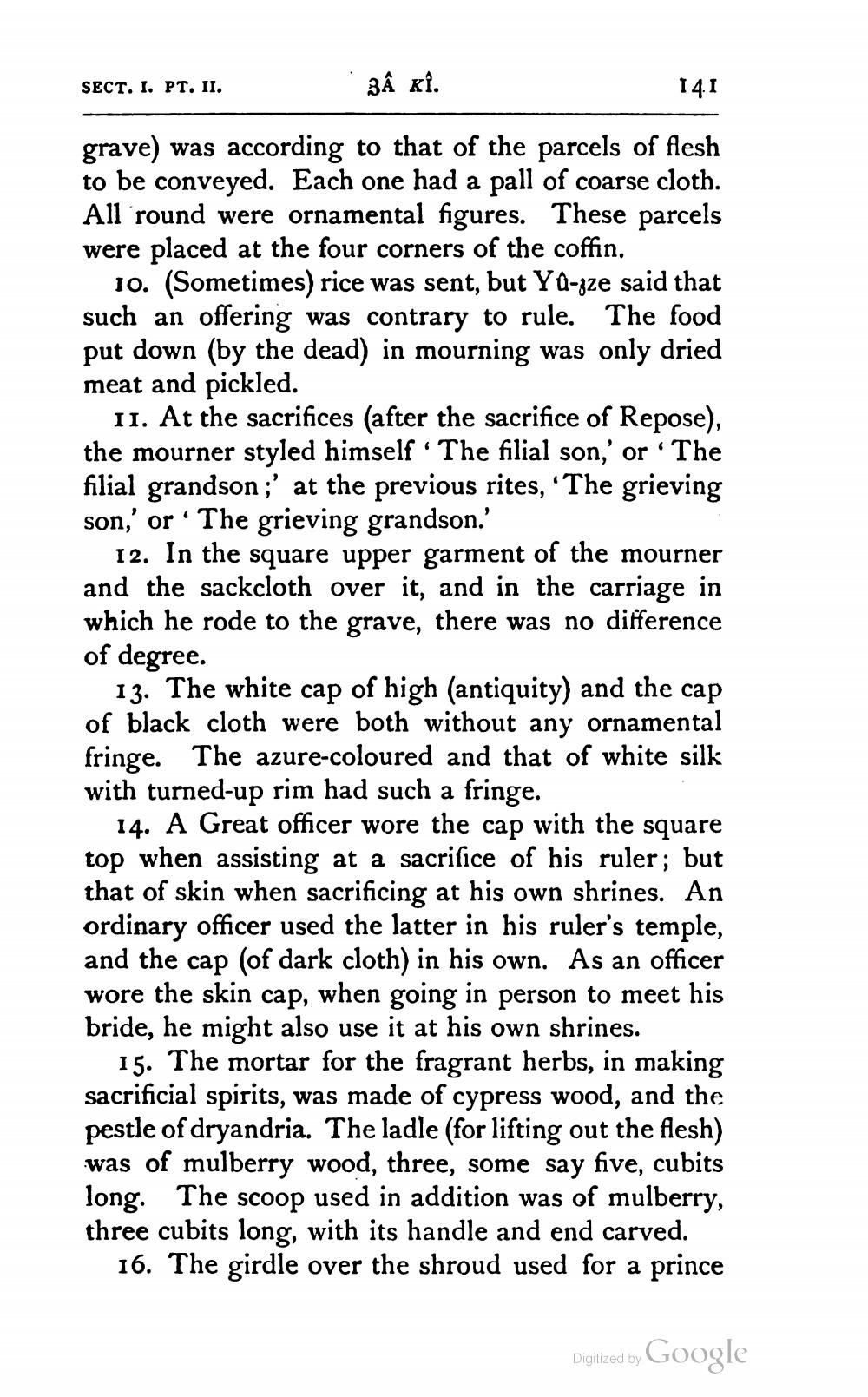________________
SECT. I. PT. II.
· ZÂ ki.
14.1
grave) was according to that of the parcels of flesh to be conveyed. Each one had a pall of coarse cloth. All round were ornamental figures. These parcels were placed at the four corners of the coffin.
10. (Sometimes) rice was sent, but Yu-gze said that such an offering was contrary to rule. The food put down (by the dead) in mourning was only dried meat and pickled.
11. At the sacrifices (after the sacrifice of Repose), the mourner styled himself · The filial son,' or 'The filial grandson;' at the previous rites, 'The grieving son,' or 'The grieving grandson.'
12. In the square upper garment of the mourner and the sackcloth over it, and in the carriage in which he rode to the grave, there was no difference of degree.
13. The white cap of high (antiquity) and the cap of black cloth were both without any ornamental fringe. The azure-coloured and that of white silk with turned-up rim had such a fringe.
14. A Great officer wore the cap with the square top when assisting at a sacrifice of his ruler; but that of skin when sacrificing at his own shrines. An ordinary officer used the latter in his ruler's temple, and the cap (of dark cloth) in his own. As an officer wore the skin cap, when going in person to meet his bride, he might also use it at his own shrines.
15. The mortar for the fragrant herbs, in making sacrificial spirits, was made of cypress wood, and the pestle of dryandria. The ladle (for lifting out the flesh) was of mulberry wood, three, some say five, cubits long. The scoop used in addition was of mulberry, three cubits long, with its handle and end carved.
16. The girdle over the shroud used for a prince
Digitized by Google




